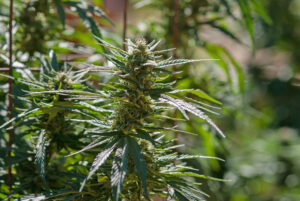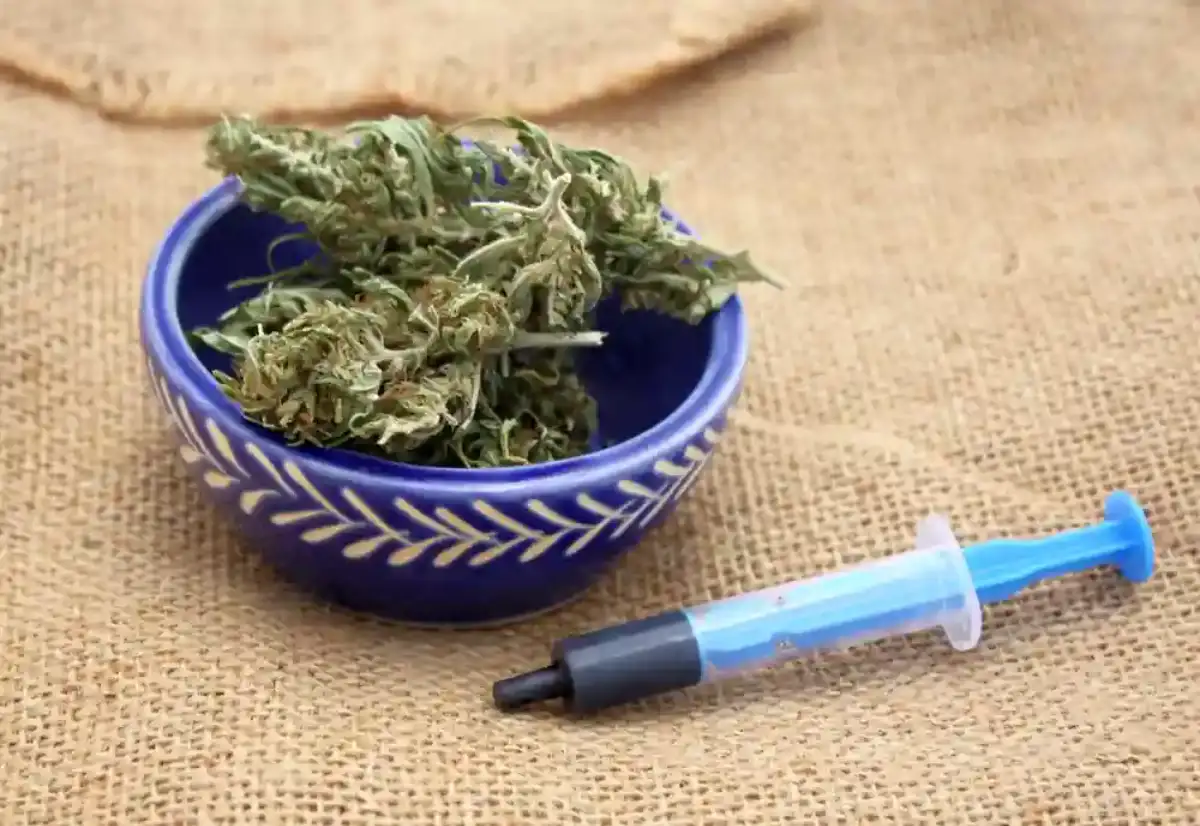Welcome to our blog post on the Harle-Tsu cannabis strain! Whether you’re a seasoned cannabis enthusiast or just starting out, this post will provide you with a comprehensive overview of this unique and highly sought-after strain.
Originating from the crossing of two legendary parent strains, Harlequin and Sour Tsunami, Harle-Tsu is known for its high CBD content and minimal THC levels. This combination makes it a popular choice for those seeking the potential therapeutic benefits of cannabis without the psychoactive effects.
In this post, we will delve into the genetics of Harle-Tsu, discussing its lineage and the breeding process that resulted in its creation. We will also explore the key characteristics of its parent strains and how they contribute to the overall profile of Harle-Tsu.
Next, we will take a closer look at the features of Harle-Tsu, including its appearance, structure, aroma, and flavor. Understanding these aspects will give you a better appreciation for the strain’s unique qualities.
One of the most important aspects of any cannabis strain is its cannabinoid profile. We will examine the specific cannabinoids present in Harle-Tsu and discuss their potential benefits for both medical and recreational users. Additionally, we will touch on any potential side effects that may be associated with this strain.
For those interested in cultivating their own Harle-Tsu plants, we will provide insights into the preferred growing methods, whether indoor or outdoor. We will also discuss the ideal climate and conditions needed to achieve optimal growth and yield. Harvest time and expected yields will also be covered to give you an idea of what to expect when growing this strain.
In conclusion, this blog post aims to provide you with a comprehensive understanding of the Harle-Tsu cannabis strain. By exploring its origins, genetics, features, effects, and growing requirements, you will be equipped with the knowledge necessary to appreciate and potentially incorporate this unique strain into your cannabis journey.
So, let’s dive in and explore the world of Harle-Tsu!
Introduction to Harle-Tsu Cannabis Strain
The Harle-Tsu cannabis strain has gained significant attention within the cannabis community due to its unique characteristics and potential therapeutic benefits. In this section, we will provide an introduction to the Harle-Tsu strain, giving you a foundational understanding of what makes it special.
Harle-Tsu is a hybrid strain that is renowned for its high CBD (cannabidiol) content and low THC (tetrahydrocannabinol) levels. CBD is a non-psychoactive compound found in cannabis, known for its potential therapeutic properties, while THC is the psychoactive component responsible for the “high” associated with cannabis.
One of the primary reasons Harle-Tsu has gained popularity is its ability to provide potential medical benefits without inducing intoxicating effects. This makes it an appealing choice for individuals seeking relief from various ailments without the mind-altering experience commonly associated with cannabis use.
Additionally, Harle-Tsu’s balanced CBD to THC ratio has made it a sought-after strain among both medical users and those looking for a more mellow, relaxing experience. The strain is often favored by individuals who want to manage symptoms such as pain, inflammation, anxiety, and stress, while maintaining mental clarity and functionality.
In the following sections, we will explore the origin and genetics of Harle-Tsu, highlighting the parent strains that contribute to its unique properties. We will also delve deeper into the specific features of the Harle-Tsu strain, including its appearance, aroma, flavor, and cannabinoid profile.
Stay tuned as we dive into the fascinating world of Harle-Tsu cannabis and discover what makes it a standout strain in the ever-evolving landscape of cannabis cultivation and consumption.
Origin and Genetics of Harle-Tsu Cannabis Strain
The origin and genetics of the Harle-Tsu cannabis strain play a crucial role in understanding its unique characteristics and potential benefits. In this section, we will explore the lineage of Harle-Tsu and shed light on how it came to be.
Understanding the Genetic Lineage
Harle-Tsu is a hybrid strain that is the result of crossing two well-known and influential parent strains: Harlequin and Sour Tsunami. Both of these parent strains are highly regarded for their individual qualities, and their combination in Harle-Tsu has resulted in a remarkable cannabis variety.
The Breeding Process
The breeding process involved in creating Harle-Tsu required careful selection and crossbreeding of the parent strains. Breeders aimed to capture the desirable traits of Harlequin and Sour Tsunami while emphasizing the high CBD content and low THC levels that make Harle-Tsu unique.
The breeders meticulously selected plants with the desired characteristics, such as high CBD levels, low THC levels, and specific terpene profiles. Through successive generations of breeding and selection, a stable and consistent Harle-Tsu phenotype was established.
Key Characteristics of the Parent Strains
- Harlequin: Harlequin is a sativa-dominant strain renowned for its high CBD content and low THC levels. It is known for producing a clear-headed and uplifting effect, making it a popular choice among medical users seeking relief from pain, inflammation, and anxiety without the psychoactive effects. Harlequin also exhibits a diverse terpene profile, contributing to its distinct aroma and flavor.
- Sour Tsunami: Sour Tsunami is another CBD-rich strain that played a significant role in the creation of Harle-Tsu. It is known for its potent analgesic and anti-inflammatory properties, making it a favorite among medical cannabis users. Sour Tsunami also carries an earthy and citrusy aroma profile, adding to the overall sensory experience.
By combining the genetic traits of Harlequin and Sour Tsunami, breeders successfully created Harle-Tsu, a strain that offers a well-balanced CBD to THC ratio, making it an attractive option for both medical and recreational users.
In the upcoming sections, we will explore the specific features of the Harle-Tsu strain, including its appearance, aroma, flavor, and cannabinoid profile. Stay tuned to discover the remarkable characteristics that Harle-Tsu has to offer!
Features of Harle-Tsu Cannabis Strain
The Harle-Tsu cannabis strain is known for its unique features that set it apart from other strains in the market. In this section, we will delve into the various aspects of Harle-Tsu, including its appearance, structure, aroma, flavor, and cannabinoid profile.
Appearance and Structure
Harle-Tsu plants typically exhibit characteristics inherited from both parent strains. The plants can display a mix of traits from sativa and indica varieties, resulting in a balanced appearance.
The plants tend to have medium to tall heights, with sturdy branches and dense foliage. The leaves are typically broad and deep green in color. The buds of Harle-Tsu are dense and compact, often covered in a frosty layer of trichomes that contribute to its overall visual appeal.
Aroma and Flavor
Harle-Tsu offers a unique sensory experience with its distinct aroma and flavor profile. The terpene profile of Harle-Tsu can vary, but it often carries a combination of earthy, sweet, and citrusy notes, with hints of pine and spice. These aromatic compounds contribute to the overall fragrance and flavor of the strain, enhancing the enjoyment for users.
Cannabinoid Profile
One of the defining characteristics of Harle-Tsu is its high CBD content and low THC levels. CBD, or cannabidiol, is a non-psychoactive compound known for its potential therapeutic properties. Harle-Tsu typically has CBD levels that range from 10% to 20% or even higher, making it an attractive choice for those seeking the potential benefits of CBD without the psychoactive effects of THC.
On the other hand, the THC levels in Harle-Tsu are usually very low, often below 1%. This low THC content ensures that users can experience the potential therapeutic effects of CBD without feeling intoxicated or “high.” The balanced CBD to THC ratio of Harle-Tsu is what makes it a popular choice among medical cannabis users and individuals seeking a more mellow and relaxing experience.
Understanding the unique features of Harle-Tsu, such as its appearance, aroma, flavor, and cannabinoid profile, provides a deeper appreciation for this remarkable strain. In the following sections, we will explore the effects and potential benefits of Harle-Tsu, both in the medical and recreational contexts. Stay tuned to discover the potential therapeutic properties and experiences that Harle-Tsu has to offer.
Effects and Benefits of Harle-Tsu Cannabis Strain
The effects and potential benefits of the Harle-Tsu cannabis strain make it a highly sought-after choice among medical cannabis users and those seeking a more mellow and relaxing experience. In this section, we will explore the various effects and potential benefits that Harle-Tsu offers.
Medical Benefits
- Pain Relief: Harle-Tsu is often used by individuals seeking relief from chronic pain conditions such as arthritis, fibromyalgia, and migraines. The high CBD content in Harle-Tsu may help reduce inflammation and alleviate pain without the psychoactive effects of THC.
- Anxiety and Stress Management: The calming properties of Harle-Tsu make it a potential option for individuals dealing with anxiety and stress. CBD has been recognized for its anxiolytic properties, potentially promoting feelings of relaxation and reducing anxiety.
- Inflammation and Autoimmune Disorders: Harle-Tsu’s anti-inflammatory properties may benefit individuals with conditions such as multiple sclerosis, rheumatoid arthritis, and Crohn’s disease. CBD has shown promise in reducing inflammation and modulating the immune response.
- Epilepsy and Seizure Disorders: CBD has gained attention for its potential anticonvulsant properties. Harle-Tsu may be used as a complementary treatment for individuals with epilepsy and seizure disorders, potentially reducing the frequency and severity of seizures.
Recreational Use
While Harle-Tsu is primarily known for its potential therapeutic benefits, it can also offer a more mellow and relaxing experience for recreational users. The low THC levels ensure a minimal psychoactive effect, making it suitable for those who prefer a mild and clear-headed experience without feeling overly intoxicated or “high.”
Harle-Tsu can provide a sense of relaxation, calmness, and mental clarity. It may be enjoyed during the daytime or evening, allowing users to unwind without impairing cognitive function.
Potential Side Effects
As with any cannabis strain, Harle-Tsu may have potential side effects, although they are generally mild and well-tolerated. Some individuals may experience dry mouth, dry eyes, or slight dizziness. These effects are typically temporary and can be mitigated by staying hydrated and consuming the strain in moderation.
It is important to note that the effects and potential benefits of Harle-Tsu may vary from person to person. Factors such as individual tolerance, dosage, and method of consumption can impact the overall experience. As always, it is advisable to consult with a healthcare professional before incorporating Harle-Tsu into a medical treatment plan.
In the following section, we will explore the process of growing Harle-Tsu cannabis, including the preferred growing methods, climate requirements, and expected yields. Stay tuned to learn how to cultivate Harle-Tsu and enjoy its unique qualities firsthand.
Growing Harle-Tsu Cannabis Strain
Growing the Harle-Tsu cannabis strain can be a rewarding experience for cultivators looking to harness its unique qualities. In this section, we will explore the key considerations and techniques for successfully growing Harle-Tsu.
Indoor vs. Outdoor Growing
Harle-Tsu can be grown both indoors and outdoors, each method offering its own advantages. Indoor cultivation provides greater control over environmental factors such as temperature, humidity, and lighting. It also allows for year-round cultivation and the ability to optimize growing conditions for maximum yield and quality. Outdoor cultivation, on the other hand, takes advantage of natural sunlight and can result in larger plants and potentially higher yields.
Climate and Conditions
When growing Harle-Tsu outdoors, it thrives in a Mediterranean-like climate with warm temperatures between 70-85°F (21-29°C). It requires a long growing season of approximately 10-12 weeks for optimal development. Adequate sunlight exposure, good air circulation, and well-draining soil are essential for healthy growth.
Indoor cultivation of Harle-Tsu benefits from maintaining a consistent temperature range of 68-77°F (20-25°C) during the vegetative stage and slightly cooler temperatures of 64-75°F (18-24°C) during the flowering stage. Controlling humidity levels between 40-50% during vegetative growth and reducing it to 30-40% during flowering helps prevent mold and mildew.
Harvest Time and Yield
The average flowering time for Harle-Tsu is around 8-9 weeks, although this may vary depending on environmental conditions and cultivation techniques. As harvest approaches, the trichomes will transition from clear to milky white, indicating the optimal time for harvest.
Harle-Tsu can produce moderate to high yields, especially when grown under optimal conditions. Indoor growers can expect yields of approximately 400-500 grams per square meter, while outdoor growers can achieve yields of 500 grams or more per plant.
Cultivation Tips
Here are some additional tips for successful Harle-Tsu cultivation:
- Start with healthy genetics: Ensure you obtain quality Harle-Tsu seeds or clones from reputable sources to lay a strong foundation for your crop.
- Pruning and training: Regular pruning and training techniques such as topping, low-stress training (LST), or screen of green (SCROG) can help optimize light penetration and promote an even canopy.
- Nutrient requirements: Harle-Tsu generally responds well to a balanced nutrient regimen. Pay attention to the nutritional needs of the plants during different growth stages, adjusting the feeding accordingly.
- Pest and disease prevention: Implement preventive measures such as regular monitoring, proper sanitation, and the use of organic pest control methods to protect your plants from common pests and diseases.
By following these guidelines and providing the optimal growing environment, you can cultivate healthy and vibrant Harle-Tsu plants, ready to deliver their unique qualities.
In the final section, we will summarize the key insights from our exploration of Harle-Tsu and conclude our comprehensive overview of this remarkable cannabis strain.
Conclusion: Understanding the Harle-Tsu Cannabis Strain
The Harle-Tsu cannabis strain is a remarkable and highly sought-after variety known for its high CBD content, low THC levels, and potential therapeutic benefits. Throughout this comprehensive overview, we have explored the various aspects of Harle-Tsu, including its origin, genetics, features, effects, and cultivation.
Originating from the crossing of Harlequin and Sour Tsunami, Harle-Tsu exhibits a balanced CBD to THC ratio, making it an appealing choice for medical cannabis users and individuals seeking a more mellow and relaxing experience.
Its unique features, such as its medium to tall height, dense foliage, and compact buds covered in trichomes, make it visually appealing. The aroma and flavor profile of Harle-Tsu can vary, often encompassing earthy, sweet, and citrusy notes.
The high CBD content in Harle-Tsu offers potential therapeutic benefits, including pain relief, anxiety and stress management, inflammation reduction, and potential use in epilepsy and seizure disorders. For recreational users, Harle-Tsu provides a clear-headed and calming experience without a strong psychoactive effect.
When it comes to cultivation, Harle-Tsu can be grown both indoors and outdoors, with specific considerations for climate, lighting, humidity, and nutrient requirements. By following proper cultivation techniques, growers can achieve moderate to high yields of this exceptional strain.
In conclusion, understanding the Harle-Tsu cannabis strain opens up a world of potential benefits and unique experiences. Whether you are seeking relief from medical conditions or simply looking for a more mellow and relaxing cannabis experience, Harle-Tsu offers a balanced CBD to THC ratio that sets it apart.
Remember, as with any cannabis strain, individual experiences may vary, and it is important to consult with a healthcare professional or knowledgeable cultivator before incorporating Harle-Tsu into your wellness routine.
We hope this comprehensive overview has provided you with valuable insights into the world of Harle-Tsu. Now, armed with knowledge, you can embark on your own journey to explore and appreciate the remarkable qualities of this cannabis strain.



